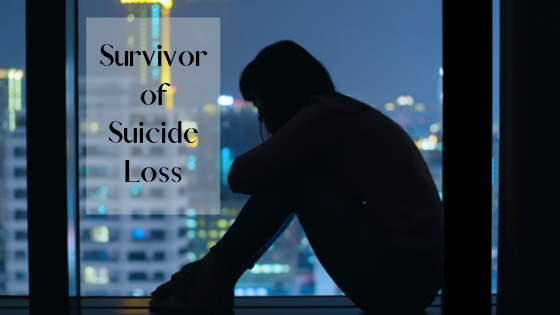I remember driving in his car and the song “Don’t You Worry Child” came on the radio. In the part where Swedish House Mafia sings, “Upon a hill across a blue lake, that’s where I had my first heartbreak”, he turned to me and asked, “ When did you have your first heartbreak?”. I shared my story and he did too. Two years later, I added another heartbreak to my story and that was losing him, my best friend, to death by suicide.
As a survivor of suicide loss, I have struggled with a complex grieving process that has entailed confusion, anger, overwhelming guilt, and healing, lots of it. Losing my best friend to suicide hit me like a ton of bricks. It was and still remains soul-crushing.
Survivors of suicide loss experience a unique bereavement that encompasses a rollercoaster of emotions. We ask ourselves “ Why did this happen to them?”, “why did i not see the signs?”, and “how could i not protect them?”. We analyze text messages and replay phone conversations to gain some sort of clarity to the countless questions that race through our minds. More often than not, we are left with unsatisfactory answers or no answers at all, which drives us to experience unpleasant feelings like anger and confusion.
The first year of my loss was the heaviest. I still could not wrap my head around the reality that my best friend was gone, and more so, I could not understand why. Every song, every memory, every journal entry, and every picture triggered a deep sadness within me. Rather than recall memories with a sense of joy, survivors of suicide loss find it difficult to connect a happy feeling to memories of a deceased, loved one. Drawing up a memory or looking at a picture stirs up questions about the person’s state of being and the authenticity behind their smile and laughs. It almost took me two years to look at a picture of my best friend without crying and feeling too much pain.
Suicide carries a stigma in our society that not only creates a distinct grieving process for survivors of suicide loss, but it complicates the way loved ones provide support. Although my well-intentioned friends attempted to comfort me with “you should not blame yourself” and “it was his decision”, these words did not sit well with me. I often remained silent in my grieving because it was emotionally draining to explain my feelings to others. However, I tried to seek support by reaching out to my best friend’s loved ones who were also impacted by his passing. I did not feel alone in my thoughts and feelings as these family and friends understood my journey all too well.
Grief is like waves. They crash harder on some days than others. The title of survivor of suicide loss was one that I never envisioned for myself, but it is one that I have carried for the past 3 ½ years. I am still healing, and I am learning to be kinder to myself as I carry my best friend’s memory. If you are a survivor of suicide loss, I am hoping the following gentle reminders can offer some form of guidance through your grieving process. These are practices that have shaped my healing journey, and I hope they can have a similar effect for you.
- This is YOUR grieving process. We all grieve differently, meaning that our time frames will also be distinct. Grieve the way that feels appropriate to you.
- Be kind to yourself. The grieving process for survivors of suicide loss entails overwhelming guilt. Be in those moments, but do not let it consume you.
- Give yourself permission to feel. If you want to cry, let those tears run. If you need support, then reach out to loved ones that can accompany you on this healing journey. If you want to be angry, then feel those emotions. It is okay.
- Find ways to commemorate your loved one when you are ready. Perhaps you decorate an altar with pictures and mementos. Or maybe you visit their favorite spot, like the beach or a restaurant. Explore those practices and rituals that can connect you to your loved one.
For more information on understanding survivors of suicide loss, please visit the following site:
https://www.psychologytoday.com/us/blog/two-takes-depression/201311/understanding-survivors-suicide-loss

